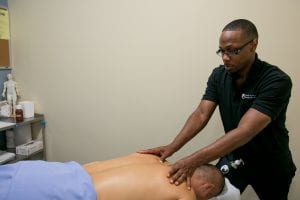Almost everyone has suffered the pain of a headache. Headaches can last for a few hours up to several days, and sometimes involve symptoms such as sensitivity to light and nausea. They can impact daily life when they occur frequently or for an extended period of time. The most common types of Chronic Headaches are muscle tension and vascular headaches. Muscle tension headaches produce dull, constant pain on both sides of the head and may also involve an aching neck or sensitive scalp. They generally start slowly and can last from hours to days. Muscle tension headaches are sometimes called muscle contraction headaches because it is the tightening of the muscles of the head, face and neck that causes the pain. This is why tension headache sufferers often describe their pain as tightening bands around the forehead or along the base of the skull.
Vascular Headaches and Their Associated Symptoms
Vascular headaches are the ones many people describe as pounding or throbbing. They occur when the blood vessels that supply the brain and the muscles in the head swell and constrict. Vascular headache pain intensifies with physical activity and typically lasts from 4 to 72 hours. It may be associated with other symptoms such as vision problems, extreme sensitivity to light, and nausea. Migraines, cluster headaches and headaches that result from high blood pressure are all examples of vascular headaches. In the United States alone, more than 60 percent of the 45 million Americans who suffer from chronic headaches suffer from migraines. The disorder can be debilitating and typically results from high stress levels and/or lack of sleep. Men suffer slightly more from headaches than females, 25 million men on average, compare to females who average about 20 million who suffer from headaches.
Are you interested in becoming a certified massage therapist?
Visit the links below to explore our massage therapy programs at a campus near you:
The Role of Massage Therapy in Relieving Chronic Headaches
Massage is one natural alternative to allopathic medicine that can help relieve chronic headaches while avoiding the side effects that often accompany prescription and over-the-counter medications. Massage therapy helps to relieve both types of headaches by easing muscle tension, relieving muscle spasms, releasing shortened muscles, and relaxing tension held in the muscles of the head, shoulders, and neck. When muscle tension eases, there is less pressure on the nerves and blood vessels that supply them. Oxygen-rich blood circulation improves, which also relieves pain. Massage therapy not only helps the muscles of the body to relax but also effectively reduces the anxiety and mental stress that can cause or exacerbate headaches. Regular, ongoing massage therapy can also help to prevent headaches by helping to reduce overall stress and maintain emotional balance.
Featured Posts:

